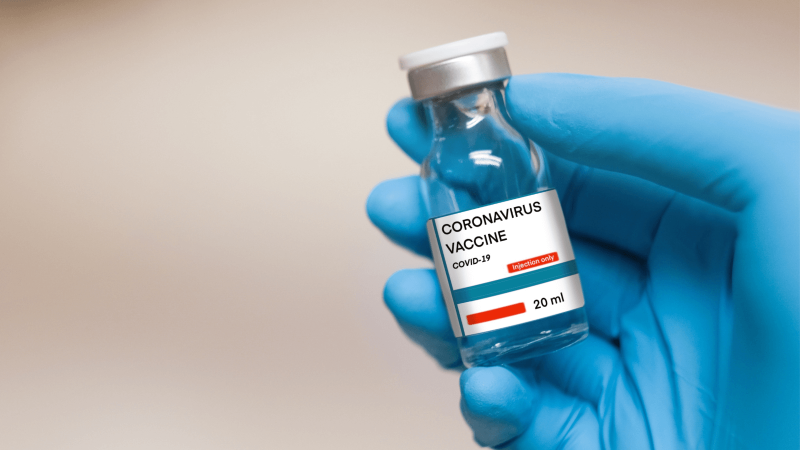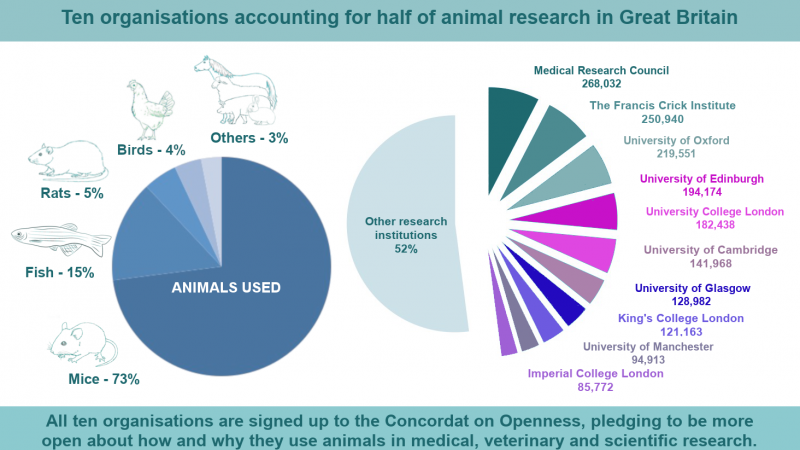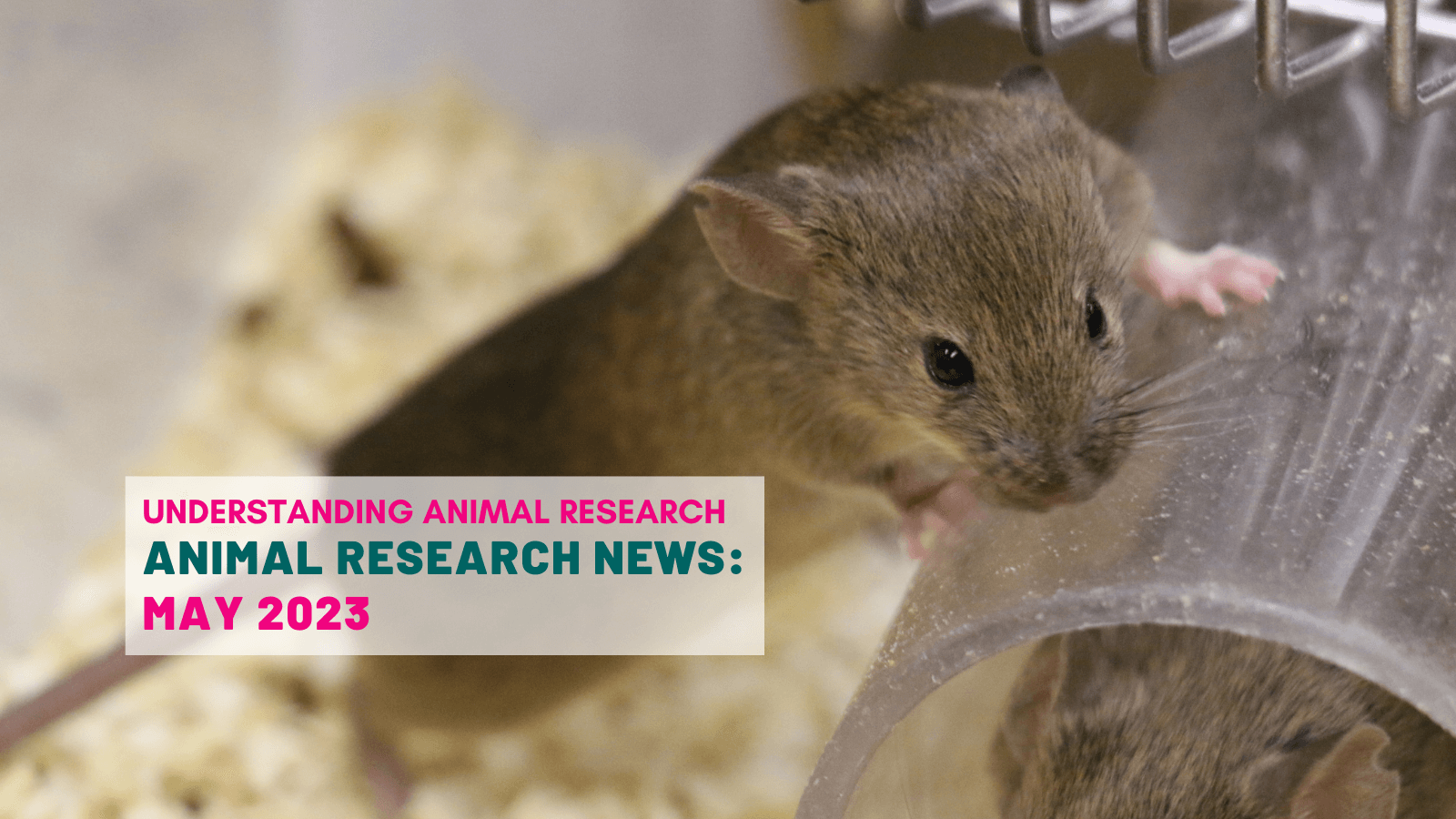
A graphene “tattoo” could help hearts keep their beat
Area of research: heart disease
Animal species: mice, rats
Traditional pacemakers don’t last a lifetime, in fact many will stop working between five and fifteen years after implantation due to the rigid and usually metallic elements they are made from. A new device dubbed the ‘graphene tattoo’ is in development at Northwestern University in Chicago, where scientists are aiming to improve the lifespan of pacemakers using graphene, a nano-material with the thickness of a single atom.
So far, the device has been tested on mouse hearts and inside living rats. In rats, the graphene tattoo was able to correct an irregular heart beat by sending pulses of electricity directly to the heart.
The tattoo consists of three layers, two outer layers of silicone and ultra-thin polymer encase a transparent layer of graphene. The graphene sheet is connected to a power source using gold tape, allowing the device to send electricity to the heart.
Stated in the original piece by ScienceNews: “Future versions of the tattoo will be wireless,” Efimov says, “perhaps using a tiny antenna to pick up electrical signals from an external device placed on a person’s chest.” And one day, Efimov envisions graphene electrodes the size of rice grains injected into heart muscle. Such miniature equipment could perform pacemaker duties without the typical clunky components. An atomically thick graphene "tattoo" (NING LIU)
“That all might sound like science fiction, but the technology is almost here,” Efimov says. “Now’s the time to develop it.”
Read more on this study at: ScienceNews.com
Read the study: Graphene Biointerface for Cardiac Arrhythmia Diagnosis and Treatment
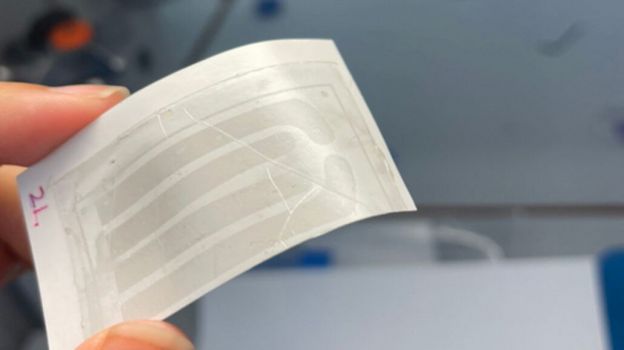
Tiny proteins found across the animal kingdom play a key role in cancer spread
Area of study: cancer
Animal species: cell cultures used from C. elegans, fruit flies, and humans
New-approach methodologies (NAMs): cell cultures
New research from McGill University in Canada has discovered a link between phosphatases of regenerating liver (PRLs) and the spread of cancer. PRLs are a family of proteins involved in cell growth and metabolism which have been found in various species of animals, including humans. Known to play a unique role in the growth and spread of cancerous tumours, the latest research has confirmed that PRLs exist in all kinds of single and multi-cell animals and that the role of PRLs in binding magnesium transporters is common among all studied species.
Professor Kalle Gehring, who led the research said, “It's important for us to study PRLs because they are so important in cancer. In some cancers such as metastatic colorectal cancer, the proteins are overexpressed up to 300-fold.”
Overexpression of PRLs results in more metastatic cancer cells and increased spread to other organs.
This overexpression of PRLs makes cancer cells more metastatic and drives the spread to other organs. Understanding the role of PRLs in cancer progression is another step towards improving cancer treatments across many fields.
“What we learned is that they all bind the magnesium transporters in the same way,” says Gehring. “We're excited because it helps us understand this pathway, and that will reveal new targets for drugs to prevent cancer progression.”
Read more on this study on: McGill.ca
Read the study: Burst kinetics and CNNM binding are evolutionarily conserved properties of phosphatases of regenerating liver
First mock monkey embryos may shine light on human pregnancy
Area of study: pregnancy and foetal development
Animal species: monkeys
New-approach methodologies (NAMs): cell cultures
Scientists in China have created the first mock embryos grown from monkey cells. Mock mouse embryos were first created in 2018 but these embryos have limitations and are not as comparable to human development.
Now, Zhen Liu of the Chinese Academy of Sciences and colleagues have created blastoids using the embryonic stem cells of cynomolgus monkeys. Raised and housed in cell cultures, the blastoids can survive for up to 18 days and develop further than any previous blastoid of this nature.
As part of the study, researchers inserted seven-day-old blastoids into eight female monkeys, three of which began to show hormones that indicate pregnancy. The results suggest that the blastoids can implant into the uterus and emulate aspects of pregnancy.
As stated in the Science article: [The blastoids] did not continue to develop inside the surrogate mothers, however, suggesting they are not perfect copies. To Nichols, “It’s reassuring that they didn’t develop further.” She thinks that failure should discourage disreputable individuals from trying to pitch human blastoids as a fertility treatment.
Read more on this study at: Science.org
Animal study sheds light on how plastic particles enter the brain
Area of study: neuroscience (the brain)
Animal species: mice
New-approach methodologies (NAMs): computer models
Microplastics can enter the blood-brain barrier after being ingested, according to new research. The blood-brain barrier is a critical mechanism for preventing toxins from entering the brain and it is an area that scientists have been particularly interested in for some time as it can prevent medicines from reaching the brain directly. Scientists may have struggled to breach the blood-brain barrier, but recent studies have shown that micro plastics have no problem clearing this hurdle.
In studies using mice and computer models, scientists have shown that tiny plastic particles can move through the protective blood-brain barrier and identified how they do it. In mice, microplastics were found in the brain just two hours after being ingested.
Co-author of the study, Oldamur Hollóczki, of the Department of Physical Chemistry at the University of Debrecen in Hungary, says:
"With the help of computer models, we discovered that a certain surface structure [biomolecular corona] was crucial in enabling plastic particles to pass into the brain.”
Scientists are concerned about the possible effects of micro-plastics inside the brain. Previous studies have shown that microplastics can have serious consequences when passing through other areas of the body, such as the intestine.
“In the brain, plastic particles could increase the risk of inflammation, neurological disorders or even neurodegenerative diseases such as Alzheimer’s or Parkinson’s,” said Lukas Kenner, one of the lead researchers of the study, in a statement.
Read more on this study at: UPI.com and IFLScience.com
Read the study: MDPI.com
Study reveals how serotonin affects animal behaviour at the whole-brain scale
Area of study: neuroscience (the brain)
Animal species: C. elegans (nematode worm)
New-approach methodologies (NAMs): Computer models
Serotonin is a chemical in the brain which influences mood and it has been a common target for medicines that look to alleviate or eradicate depressive symptoms and others related to psychiatric disorders. There has been substantial research into developing medications that affect serotonin levels, however our understanding of how serotonin affects behaviour has remained incomplete, until now.
New research from MIT has shown how serotonin affects behaviour, from individual molecules to the entire brain, using C. elegans, a tiny, non-parasitic nematode worm.
Steve Flavell, associate professor at The Picower Institute and MIT's Department of Brain and Cognitive Sciences, and senior author of the study says:
“There have been major challenges in rationally developing psychiatric drugs that target the serotonergic system. The system is wildly complex. There are many different types of serotonergic neurons with widespread projections throughout the brain and serotonin acts through many different receptors, which are often activated in concert to change the way that neural circuits work."
The same issues that scientists find when studying serotonin in people are also present in the nematode worm C. elegans, albeit to a lesser degree.
From the article: C. elegans has only 302 neurons (rather than billions) and only six serotonin receptors (rather than the 14 found in people). Moreover, all C. elegans neurons and their connections have been mapped out and its cells are accessible for genetic manipulation. Finally, Flavell's team has developed imaging technologies that enable them to track and map neural activity across the worm's brain simultaneously. For all these reasons, the lab was able to produce a novel study revealing how the far-reaching molecular activity of serotonin changes brain-wide activity and behavior.
The results of the study have given science a new understanding of how serotonin acts on different sets of receptors, and how these receptors modulate behaviour and activity across the brain.
Read more on how this study was carried out oat: news-medical.net
Read the study: Dissecting the functional organization of the C. elegans serotonergic system at whole-brain scale
A new organelle has been found in fruit fly cells
Area of study: microbiology
Animal species: fruit flies
Researchers at Harvard University have discovered a new organelle inside the gut cells of fruit flies.
Organelle are structures within cells that have one or more specific roles to perform, such as nuclei and mitochondria, and are essential for a whole cell to function.
The newly discovered organelle’s function is to stockpile phosphate, a chemical essential to maintaining a healthy body. If a shortage of phosphate occurs, the new organelle releases its stockpile in the form of phospholipids, an essential component of the membrane structure of cells.
From the article: “This is one of the first studies to actually find phosphate storage in an animal cell,” Rebekka Wild told Nature’s Gemma Conroy. A structural biologist at French state research organization the Centre national de la recherche scientifique (CNRS), Wild was not involved with the study.
Read more on this study at: FreeThink.com
Read the study: A phosphate-sensing organelle regulates phosphate and tissue homeostasis
Research unveils paths to stopping cytokine storms in COVID-19
Area of study: Covid-19 and other coronaviruses
Animal species: mice
New research in mice has discovered why some COVID-19 patients suffer severe inflammatory illnesses such as myocarditis, pericarditis, liver injury, proteinuria and acute kidney injury.
Results from the study provide important insights on SARS-Cov-2 and the common cold, including:
- The possibilities for treating severe COVID-19 disease with specific dual pathways to stopping the storm of inflammation (called cytokine depletion), rather than a single cytokine depletion, which current treatments have provided.
- How using a single cytokine depletion to treat COVID-19 may relieve mild to moderate manifestations of the infection in organs other than the lungs.
- Why patients with rare kidney diseases like minimal change disease and focal and segmental glomerulosclerosis become far more ill after a common cold infection and how that injury may be stopped.
How COVID-19 causes severe multi-organ injury in some patients and the pathways to stopping the cytokine storms behind it.
From the article: “The research inspires a paradigm shift in how we think about cytokine-storm related illness,” said RUSH nephrologist Sumant Chugh, MD, senior author of the article Cytokine storm-based mechanisms for extra-pulmonary manifestations of SARS-CoV-2 infection.
Read more on this study at: MedicalXpress.com
Read the study: Cytokine storm–based mechanisms for extrapulmonary manifestations of SARS-CoV-2 infection
3Rs research
Brain research with organoids
Area of study: New-approach methodologies (NAMs)
Animal species: monkeys
New-approach methodologies (NAMs): computer models
A brand-new batch of brain organoids have been created using primate cells by researchers at the German Primate Center (DPZ) – Leibniz Institute for Primate Research in Göttingen.
From the article: [Scientists] have now succeeded in genetically manipulating brain organoids quickly and effectively. The procedure requires only a few days instead of the usual several months and can be used for organoids of different primate species. The brain organoids thus enable comparative studies of the function of genes at early stages of brain development in primates and help to better understand neurological diseases (Jove Journal).
Whilst brain organoids are not yet complex enough to replace a whole living animal, they play a distinct and welcome role in reducing the overall numbers of animals used in scientific research.
Read the press release on: EurekaAlert.org
Image Right: Part of a common marmoset brain organoid; cells in green, neurons in purple, nuclei in grey (Lidiia Tynianskaia)
UAR News - A new animal research conference
May 2024 marks the 10-year anniversary of the UK’s Concordat on Openness on Animal Research. To celebrate this important landmark for the world’s first transparency agreement, Understanding Animal Research is delighted to host a first-of-its-kind conference dedicated to openness in animal research.
The Openness in Animal Research Conference 2024 is not just for Concordat signatories. We hope to bring together colleagues from across the world who have a professional interest in openness and improving laboratory animal welfare, whether or not they have an openness agreement in place or are working towards one. The conference will be an opportunity to get together, share ideas, celebrate the achievements of the Concordat, and look forward to the next ten years. We hope to see you in 2024!
Sign up to the Openness in Animal Research conference mailing list to register your interest and recieve updates on conference news, including abstract submission details and early-bird ticket registration.
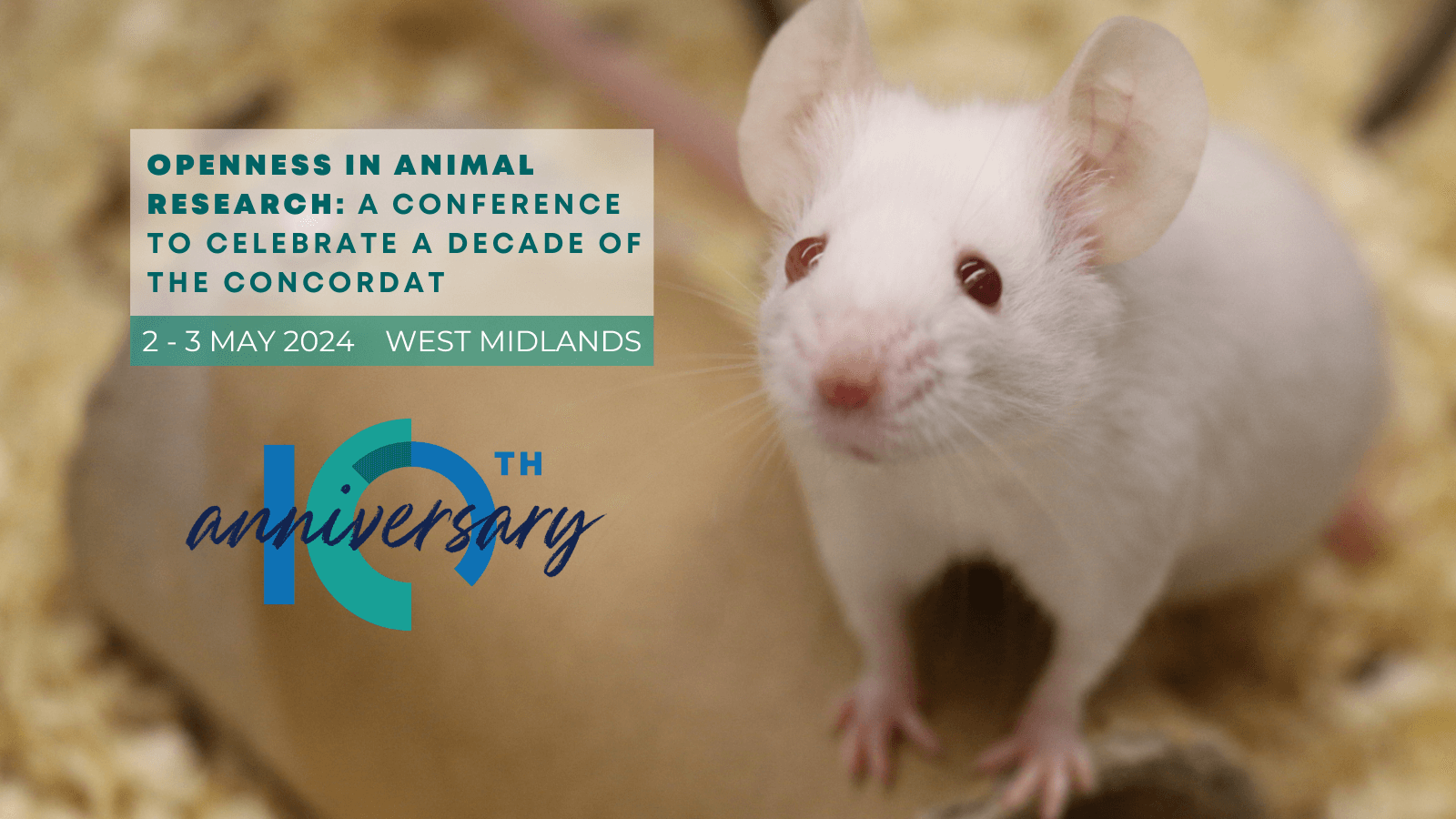
Conversations around animal research
Below are some excerpts from online articles covering current topics of discussion around animal research.
Threat to all biomedical research in EU phase-out petition
"Last week the European Parliament’s Committee on the Environment, Public Health and Food Safety (ENVI) held a hearing for the petitioners of the European Citizens’ Initiative (ECI), Save cruelty-free cosmetics – Commit to a Europe without animal testing, to present their demands.
After setting out their arguments about replacing animal testing for risk and safety assessment of hazardous ingredients used in cosmetics and other chemicals, the petitioners, from PETA and Cruelty Free Europe, moved on to a call for a roadmap to be devised, by the end of 2024, to end the use of animals in all EU biomedical research."
Read more on: EARA.eu
Embracing alternatives to animal research while also embracing reality
"Heard of the FDA Modernization Act? It’s already got quite a reputation.
After its passage in the final days of 2022, PETA immediately deemed the federal legislation “groundbreaking,” calling it “a radical shift in the way drugs and treatments are developed.” Another animal rights group predicted the act would usher in “better treatments to patients, and drive down drug prices.”
Read more on: TheNewsHerald.com
Recent articles from UAR
Mice in research: what types of mice are used in research?
What sheep brains can tell us about Huntington’s disease
Leaders in Openness 2023 - 2026
Last edited: 5 June 2023 11:32

